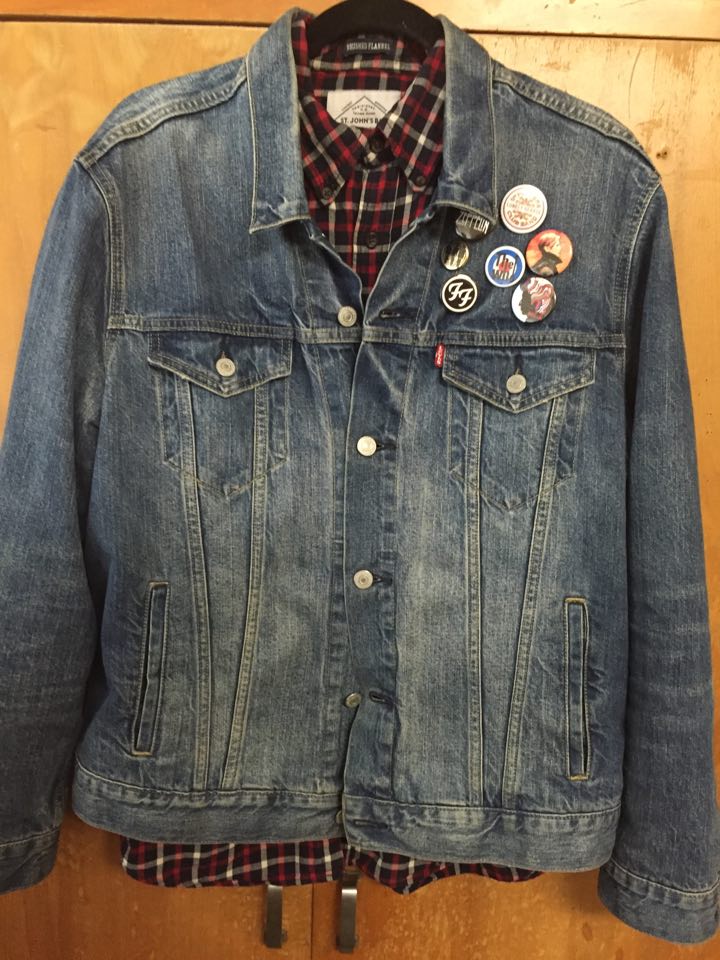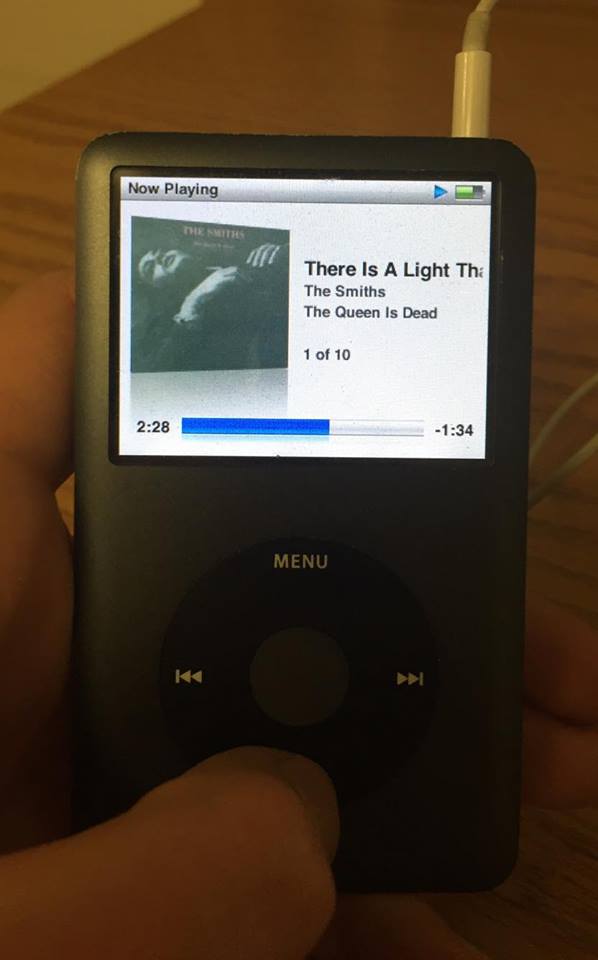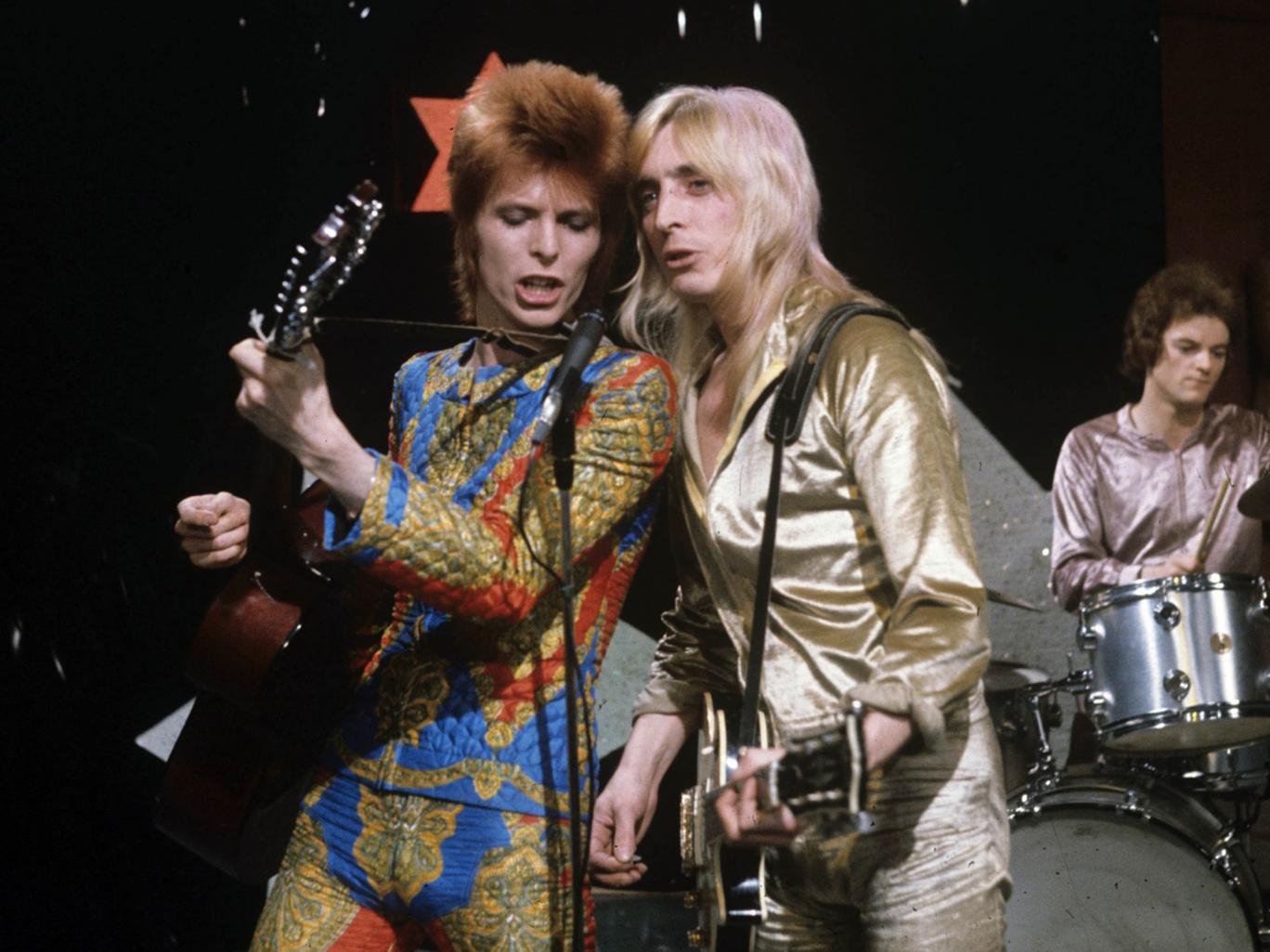A little over a year ago, I bought a Levi’s denim trucker jacket. I bought it with a purpose. I wanted to tap into a zeitgeist. The trucker jacket was introduced by Levi Strauss & Co. in 1962, and quickly became a staple of modern fashion of the last five decades. It wasn’t the first denim jacket on the scene, but it became the benchmark to live up to.
The trucker jacket, and the Levi’s trucker jacket in particular, has become one of the most distinctive pieces of fashion in rock and roll. It became a symbol for a very rock and roll brand of rebellion and roughness. It showed the working-class roots and appeal of rock and roll re-appropriated to have an anti-establishment edge.
There are tons of clothes that speak to rock and roll. One of my particular favorites is the band t-shirt. I go absolutely nuts for t-shirts of my favorite bands. I pretty much wear a band t-shirt every day. I see it as a reflection of and a testament to my love of that band. So when I wear that t-shirt, that band’s image, as well as the image of their fanbase, becomes part of my identity.
As my love of music expanded, the desire to embody that image became stronger and stronger. The band t-shirts stayed, but along with them came flannel shirts, a fringe jacket, an army jacket, roughed-up blue jeans, black skinny jeans, black Chuck Taylors, Chelsea boots, a mountain of buttons, and eventually, the Levi’s trucker jacket. I had formed my rock and roll image, a mix of ’60s mods, bohemian and folk singer-songwriters, ’70s rock, ’90s grunge, and a touch of modern hipster. But whatever the look is, it has to ooze rock and roll. It has to look like I wouldn’t look out of place onstage or in the audience for whichever band I’m jamming to that day.
But what my “rock” aesthetic almost always looks like is a band t-shirt, jeans, and a flannel. It’s become a uniform, saying “I want to rock and roll” as loud as you can by just walking into a room. It’s worked forever, and it will always work. It is the populist statement of rock and roll. John Fogerty of Creedence Clearwater Revival got so cozy with the flannel shirt that there’s even a John Fogerty flannel, as well as his flannel-patterned guitar. It is a social statement as much as it is a fashion statement.
Now, with the entirety of rock and roll history at our fingertips and easily traceable sonic and aesthetic influences from generation to generation, it’s possible to have a much wider array of fashion choices that fits into a “rock” canon. That means that these rock styles can blend together aesthetically, just like in the music itself.
Which brings it all back to that jacket. The denim jacket has been used a million times, constantly shifting to look dangerous, rebellious, and cool in a completely different kind of rock and roll. Now more than ever, the denim jacket and the roots-y look it works in tandem with has been co-opted by mainstream country music to serve their needs, as rock has fallen out of the center of the pop sphere. In country music, the jacket is supposed to make the singer or the audience member look like a cowboy, but in rock and roll, it’s supposed to feel like a true outlaw statement.
https://www.youtube.com/watch?v=LNDpW0nMi2I
So when Andrew Jackson Jihad sing about dreams of rock and roll, of course they mention a “sweet dick denim jacket.” It feels so naturally “rock and roll” that the jacket does all the heavy lifting on its own.



